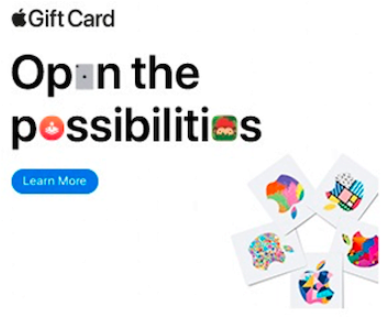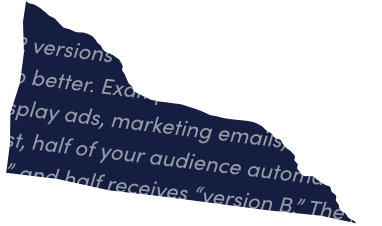Banner ads are a type of digital ad that typically appear at the top, bottom, or sides of a web page, and are typically rectangular in shape.
Banner ads often include graphics, text, and a call-to-action button inviting you to “click here.” Their purpose is to promote a product, service, brand, or website and get you to take a closer look by visiting the advertiser’s landing page. Companies big and small use banner ads to reach a broad online audience. To buy these ad placements, they typically use online advertising networks that act as the ‘middleman’ between advertisers and website publishers.
What is a banner ad?
Banner ads are a common form of digital advertising you see while browsing the web. Banner ads are usually rectangular in shape – hence the name ‘banner’ – and usually feature images, text, and a “click here” button. They are also sometimes called “display ads”.
The purpose of a banner ad is to advertise a product, service, brand, or website and encourage potential customers to learn more by clicking through to the advertiser’s page.
By utilizing online advertising networks, companies can place their banner ads on websites that cater to their target market, making it a cost-effective way to reach a wide audience on the internet. These networks act as intermediaries between advertisers and websites, providing a platform for companies to easily purchase and place their ads.
It’s worth mentioning that there are other forms of online advertising, such as native ads and social media ads, but banner ads remain one of the most popular and widely used.
How do banner ads work?
Banner ads work by using a code snippet that is embedded into a web page. The code communicates with an advertising network, which serves as a bridge between the advertiser and the website publisher. When a visitor loads the web page, the code sends a request to the advertising network, which then selects an appropriate ad to display on the page.
The banner ad typically includes a small, transparent image called a tracking pixel. This image is used to keep track of how many times the ad has been seen and how many clicks it’s received.
When you see a banner ad, you have the option to click on it. If you do, you’ll be taken to the advertiser’s landing page. The tracking pixel records this click and sends the information back to the ad server.
The ad server uses this data to give the advertiser valuable information about how the ad is performing. They can see how many times the ad was viewed, how many clicks it got, and what the overall click-through rate was. This information helps advertisers improve their campaigns, target the right audience, and make their ads more effective.
Banner ads sizes
Here are some of the most common banner ad sizes:
Desktop
- 728×90: leaderboard size banner, appearing at the top of a webpage.
- 468×60: banner size that appears in the header or footer of a webpage.
- 300×250: medium rectangle size banner, appearing on the side of a webpage.
- 160×600: wide skyscraper size banner, appearing on the side of a webpage.
Mobile
- 300×50: small banner size that appears at the bottom of a mobile screen.
- 320×50: standard size banner that appears at the top or bottom of a mobile screen.
- 320×100: large mobile banner that appears at the top of a mobile screen.
- 300×250: medium rectangle size banner that can appear on the side of a mobile screen.
It’s important to note that these are just common sizes, and actual banner ad sizes can vary depending on the platform and the advertiser’s specifications.
Banner ad examples
Samsung
This banner ad is a simple, yet effective example of a leaderboard-size banner ad. The black text on a white background, with a small splash of vibrant color on the laptop screen catches the attention. The ad copy is clever and communicates the benefits well. It can be read as one sentence – create work anywhere, or three separate statements – Create. Work. Anywhere.

Apple
The Apple medium sized side banner ad uses colorful graphics and playful text elements to advertise their gift cards.

McDonald’s
This eye-catching McDonald’s ad encourages people to click the ad by promising an interactive experience. Clicking on the ad takes users to a page where they can interactively create their own Quarter Pounder burger.

Amazon
The Amazon leaderboard banner ad is simple and effective, with good use of quirky graphic elements to draw attention to the sales message.

Banner ads prices
Banner ads prices can vary a lot. Prices depend on various factors such as the ad size, target audience, and the website that the ad appears on. In general, banner ads pricing plans use one of the following methods:
- Cost per thousand impressions (CPM): The advertiser pays a set fee for every 1,000 views of the ad. The cost depends on factors such as the target audience and popularity of the website.
- Cost per click (CPC): The advertiser pays each time someone clicks on the ad. The cost is determined by factors such as the target audience and competition for ad space.
- Cost per action (CPA): The advertiser pays each time a specific action is taken, such as making a purchase or signing up. The cost is determined by factors such as the target audience and the ad success rate.
- Cost per view (CPV): Similar to the CPM model, but reserved specifically for video ads. The advertiser pays each time someone views the ad for a certain amount of time.
Other factors that influence the price of banner ads include the location of the ad on the webpage, the duration of the ad campaign, and the use of targeting techniques, like demographic and behavioral targeting.
It’s common to see a wide pricing range that depends on the advertiser’s goals and budget. If you want to determine the best pricing strategy for you, it’s a good idea to work with a media buying agency or online advertising platform.
Are banner ads and display ads the same?
Banner ads and display ads are often used interchangeably because they refer to the same type of advertising.
Banner ads are graphical ads that are displayed on websites. Display ads is a broader term that refers to any type of advertising that appears on websites, which can include banner ads.
Put simply, banner ads are a type of display ad, and therefore the two terms can be used interchangeably.
Banner blindness
Banner blindness is a major challenge for advertisers. Over the years, web users have become accustomed to ignoring banner ads. Banner ads tend to appear in similar locations and feature similar designs and copy. For this reason, users often overlook them and focus more on the actual content of the website they are visiting rather than the ads.
A study by Infolinks revealed that 86% of people show signs of banner blindness when visiting websites.
To combat this phenomenon, advertisers need to create unique and relevant ad content that stands out from the usual banner ad format. For instance, they can use creative designs and innovative ad formats. Highly targeted messaging that resonates with their target audience is also used to make an impact. Making changes like this will increase the visibility and effectiveness of ads, increasing engagement with their website visitors.
In recent years, there has been an uptick in the use of ad blockers as more and more users become increasingly frustrated with the overabundance of online advertisements. Factors such as intrusive and annoying ads, the rise of mobile devices, and their limited screen space, as well as privacy concerns, have contributed to this trend. As a result, users are looking for ways to reduce or even eliminate online ads from their browsing experience.
To counteract ad blockers, some websites use anti-ad blocking measures, such as requesting that people disable their ad blockers or limiting access to content for users who have ad blockers enabled.
Banner ads vs native ads
Over the past decade, native ads have become an attractive option for advertisers looking to diversify their digital advertising approach. Native ads and display ads, or banner ads, are both popular forms of online advertising, with several key differences:
Native ads fit seamlessly with the look and feel of the web page where they appear, so they don’t stand out as ads. They take a more ‘soft-sell’ approach. Display and banner ads, on the other hand, are very overt on the web page, and are clearly ads. They may even disrupt the user experience, which is why ad blockers have become so popular.
Native ads are viewed more than banner ads and contribute to higher brand lift but are more expensive per click. Banner ads are cheaper per click but have a lower click-through rate.
Native ad spending and banner ad spending alike continue to rise. Both types of ads are frequently used by performance marketers as part of their online strategy.


